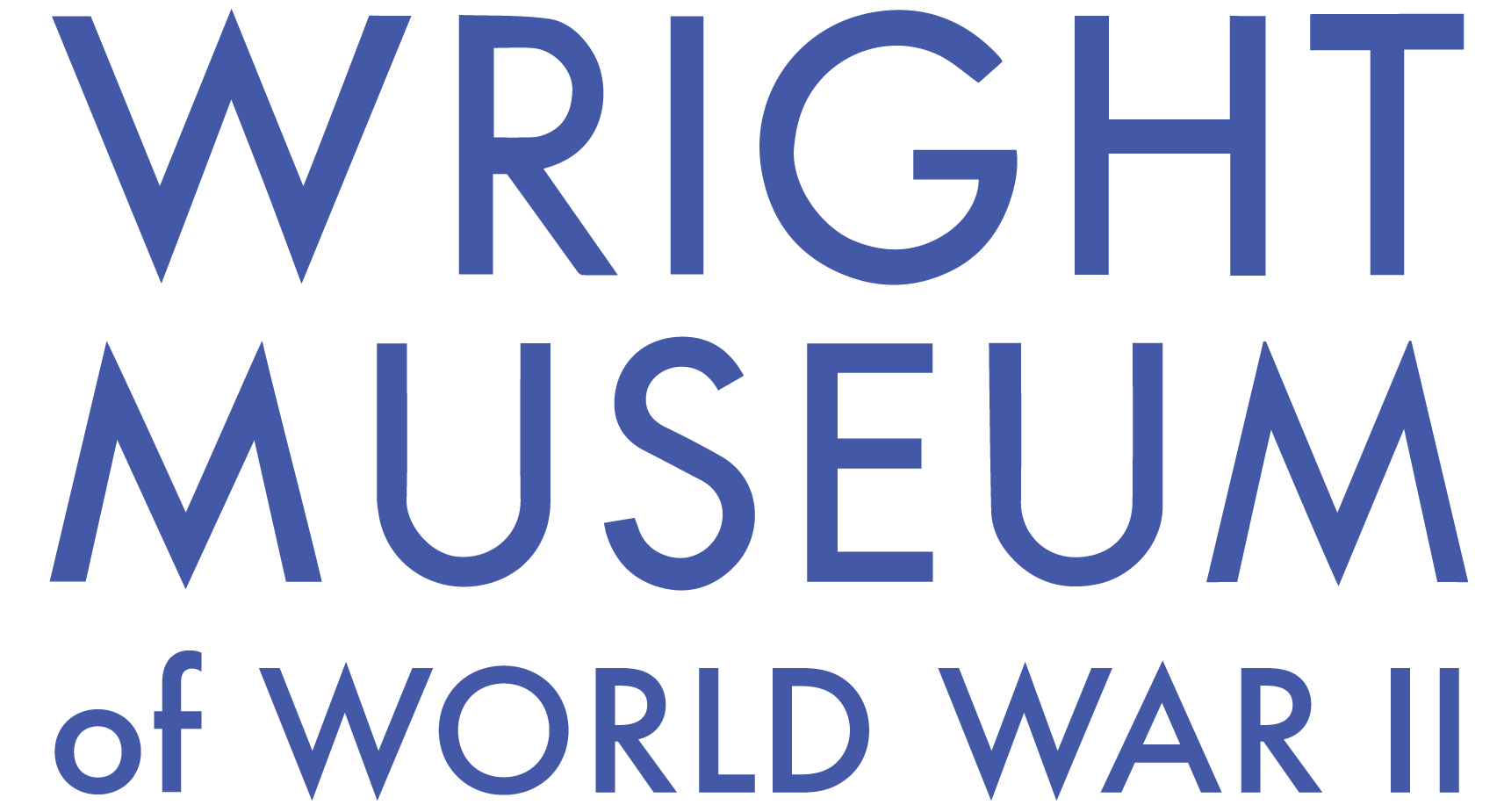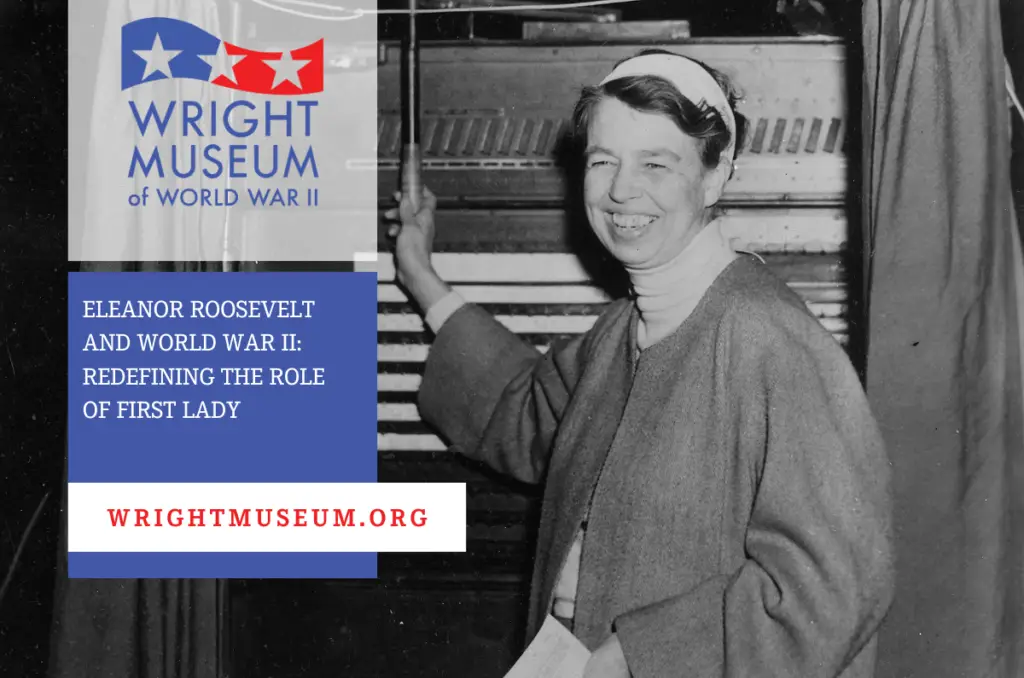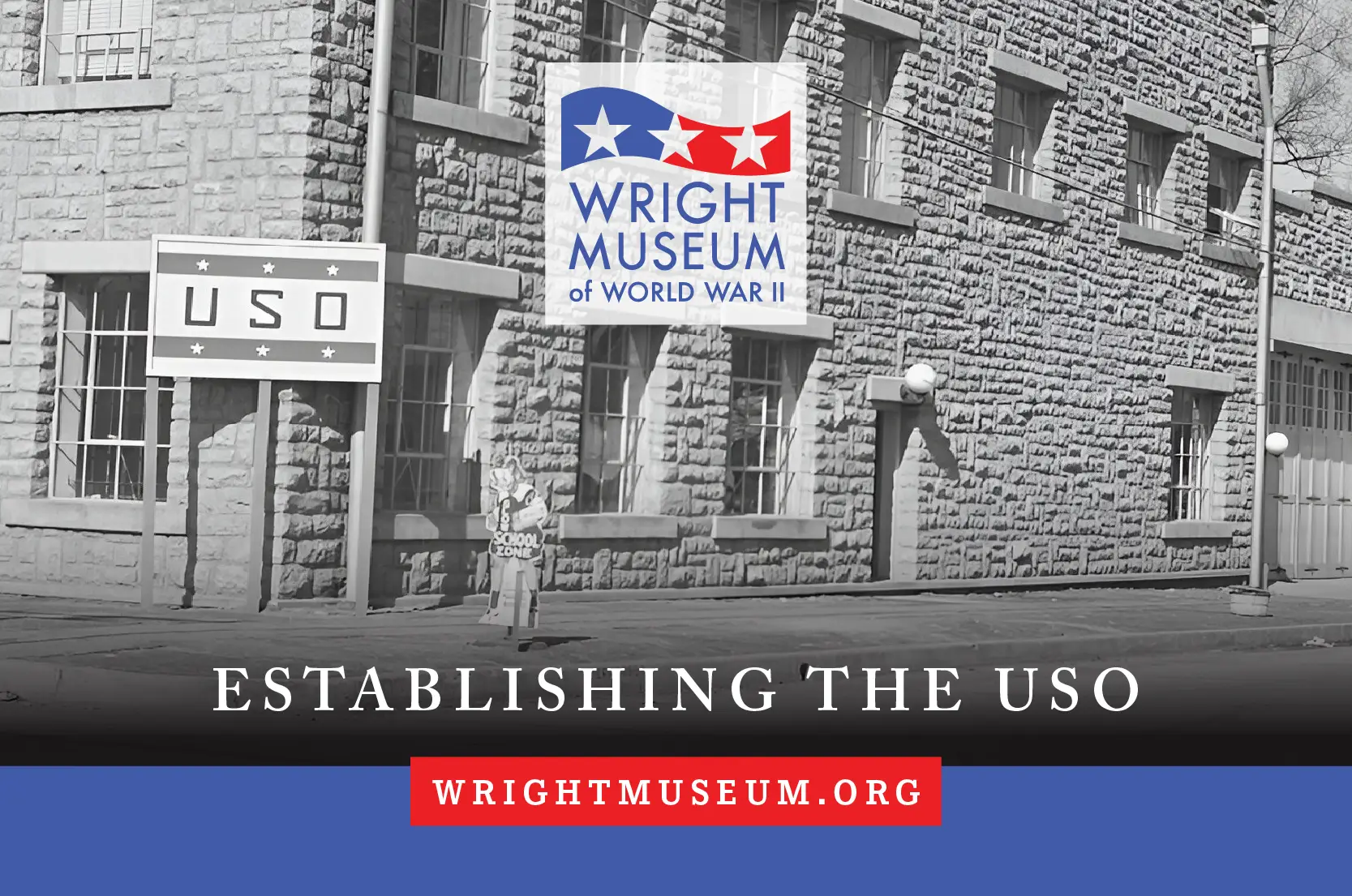“If the generation that fights today is to lay the foundations of which a peaceful world can be built, all of us who have seen the war close range must remember what we see and carry a crusading spirit into all of our work.” – Eleanor Roosevelt
October marks the anniversary of the birth of Eleanor Roosevelt, one of the most recognized names in American 20th century history. The niece of one history-making president and the wife of another, Eleanor Roosevelt was a witness to an era that saw our nation through two world wars, a Great Depression, the rise of the independent woman, and the beginnings of the civil rights movement. Through it all, she remained a steadfast witness and catalyst for change, unwilling to settle for a backseat role in what she saw as pivotal moments in history.
Often referred to as the “eyes, ears, and legs” of her husband Franklin Delano Roosevelt (FDR), Eleanor Roosevelt refused to settle for the traditional role played by politicians’ wives of the day, that of social hostess. Instead, she actively campaigned for her husband, and upon his election to the White House, she set about transforming the role of first lady. Traveling throughout the country, giving lectures and radio broadcasts, Eleanor Roosevelt became one of the most active first ladies in American history. Always with an eye on how the American people were really doing both economically and socially, Eleanor Roosevelt would report her observations to her husband, ensuring that both Roosevelts remained attuned to what the American public was thinking and feeling. She was the earliest first lady to hold her own press conferences, inviting only women reporters to the White House—signaling her approval for women in journalism and other traditionally male careers and giving women real opportunities to advance in their chosen careers through exclusive access to her.
A prolific writer, Roosevelt began a syndicated newspaper column, “My Day,” during her husband’s first term in the White House and continued almost until her death. Filled with information and her observations on what she saw throughout her day as America’s first lady, the column connected her with the American people and was one reason those she interacted with felt seen and heard. As World War II came to America, her column became an important way to promote the war effort and to prepare the home front for war. Her regular radio broadcasts brought her into American homes as a respected and trusted voice as well. In fact, on the evening of FDR’s “Day of Infamy” speech on December 8, 1941, Eleanor Roosevelt also spoke to the American people through her own radio broadcast, speaking about the war effort, seeking to calm fears, and calling on the women and children of the home front to support the president and the nation’s leaders in the coming days as they readied our country to join the fight.
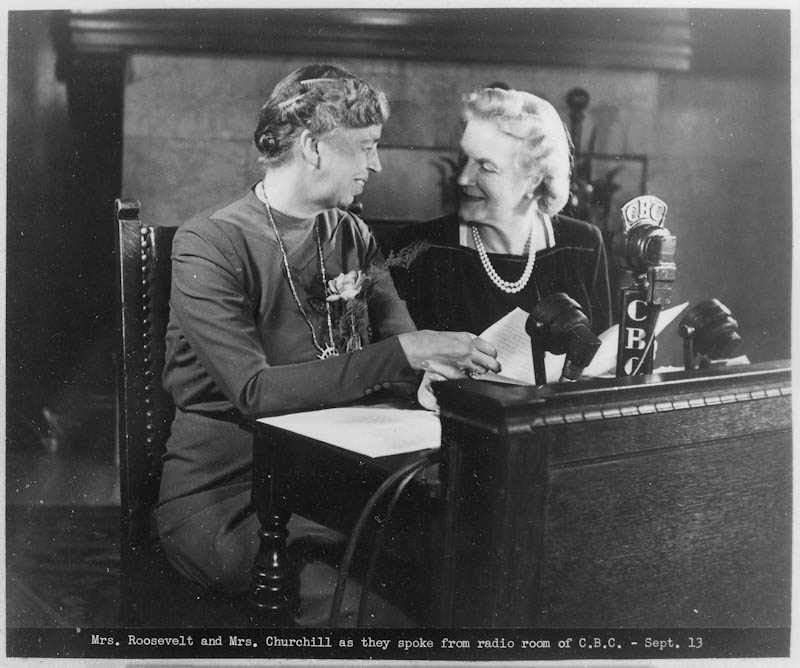
Discontent to sit at home as war efforts ramped up, Eleanor Roosevelt traveled to the western U.S. to help set up support for the war in that area of the country. She served as the assistant director of civilian defense from 1941 to 1942, continuing to use her influence to bolster war efforts at home and to ensure that the home front was strong in its support of those fighting overseas. At her husband’s request, Eleanor Roosevelt traveled to Britain in October 1942. The request allowed her to feel she was “doing something useful,” and she wrote in detail about her experiences in her “My Day” column, bringing the realities of the war front to the home front of America.
In 1943, she traveled to the Pacific front. Initially limited to a visit of Australia and New Zealand, Eleanor Roosevelt lobbied hard with her husband and the military to add visits to Guadalcanal and surrounding islands to her itinerary. Deemed too dangerous and too much of a logistical nightmare to plan and execute, the success of her Pacific theater visit led to her visiting an additional 17 islands, including Guadalcanal, and interacting with over 400,000 soldiers.
Throughout her travels, Eleanor Roosevelt was always interested in seeing what women on the home front were accomplishing as well as praising the efforts of women who served in various support roles near the front lines. Her travels prompted Time magazine to say, “No other U.S. mother had seen so much of the panorama of the war, had been closer to the sweat and boredom, the suffering.” It was an experience she shared with the American public, tirelessly championing the war cause, the contributions of the home front, and the evolving role of women and other underprivileged demographics.
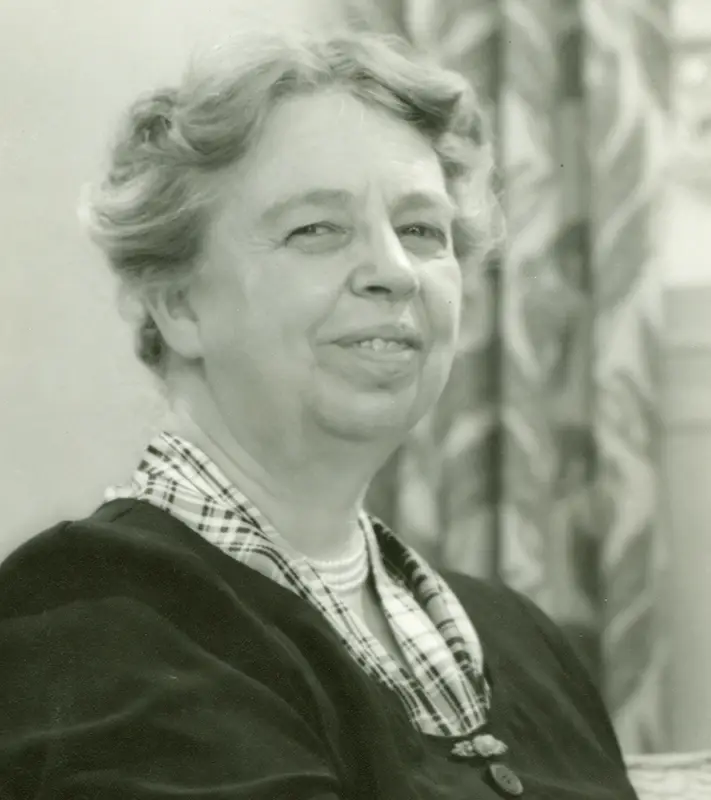
Even after the war ended, Eleanor Roosevelt continued to challenge the traditional roles women—even first ladies—fell into. President Truman appointed her as the United States delegate to the first United Nations General Assembly. It was a role she held until 1952. During her service, she served as chairperson of the United Nations Human Rights Commission. As chairperson, she oversaw the drafting and passage of the Universal Human Declaration of Rights, which she considered one of her greatest accomplishments. She served as a UN delegate again under President Kennedy as chairperson of the President’s Commission on the Status of Women. She remained active in the civil rights movement and a variety of other human rights issues up until her death in 1962. A true champion for women and the underprivileged, Eleanor Roosevelt stands as a shining example of the reasons the role played by the home front is vital to understanding the lasting legacies of World War II.
Come see us at the Wright Museum next season and check out our permanent Home Front exhibit.
Information for this article and additional information on Eleanor Roosevelt and her contributions to World War II may be found at the following sites:
- Franklin D. Roosevelt Presidential Library and Museum, “Eleanor Roosevelt Biography”
- History.com, “Eleanor Roosevelt”
- National Park Service, “Eleanor Roosevelt and World War II”
- United States Holocaust Memorial Museum, “Eleanor Roosevelt”
